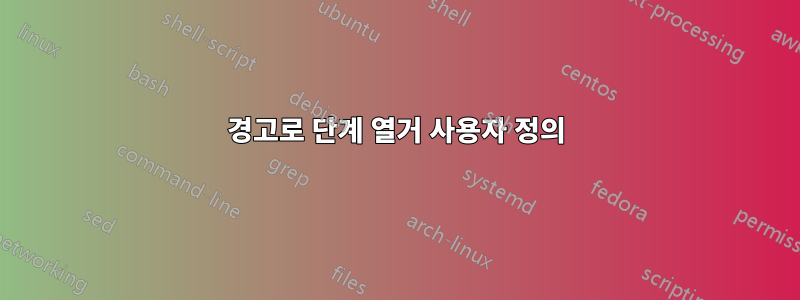
다음과 같은 MWE가 있습니다.
\documentclass[xcolor=pdftex,t,11pt]{beamer}
\newenvironment{stepenumerate}{\begin{enumerate}[<+->]}{\end{enumerate}}
\newenvironment{stepitemize}{\begin{itemize}[<+->]}{\end{itemize} }
\newenvironment{stepenumeratewithalert}{\begin{enumerate}[<+-| alert@+>]}{\end{enumerate}}
\newenvironment{stepitemizewithalert}{\begin{itemize}[<+-| alert@+>]}{\end{itemize} }
\begin{document}
\section{Time series}
\subsection{Few preliminaries}
\begin{frame}
\frametitle{Time series}
\framesubtitle{Few preliminaries}
\begin{stepitemizewithalert}
\item Before entering our topics, let us review some of the properties of time series.\medskip
\begin{stepenumeratewithalert}[Prop. 1:]
\item Time series data have autoregressive (AR), moving average (MA) and seasonal dynamic processes. Since data are ordered in time, this means that past values affect future values. This often results in a violation of the assumption of no serial correlation in the OLS:\medskip
\begin{equation*}
E\left[\varepsilon_{t},\varepsilon_{s}|\mathbf{x}\right]\neq0 \ \forall t\neq s
\end{equation*}
\item Time series often have time dependent moments (as mean, variance and so on). In many time series, the mean or the variance increase over time (this is a non--stationarity issue, we will discuss later).
\end{stepenumeratewithalert}
\end{stepitemizewithalert}
\end{frame}
\begin{frame}
\frametitle{Time series}
\framesubtitle{Few preliminaries}
\begin{stepitemizewithalert}
\item In addition:\medskip
\begin{stepenumeratewithalert}[Prop. 3:]
\setcounter{enumi}{2}
\item The sequential nature of the data allows for forecasting of future events.\medskip
\item Events in time series may generate a structural break (e.g. remember the Chow break--point test, you carried out last time).\medskip
\item Many time series are in an equilibrium relationship (this is the cointegration topic we will discuss later).\medskip
\item Many time series are endogenously related. In this case we can model them within a multi-equation time series approach like the vector autoregressive model (VAR).\medskip
\item The effect of the regressors on the regressand can vary over time. In this case, we can use some varying parameter models to account for this.
\end{stepenumeratewithalert}
\end{stepitemizewithalert}
\end{frame}
\end{document}
stepenumeratewithalert 환경을 사용자 정의하려고 합니다. 발의안 1, 2 등이 아닌 발의안 1, 발의안 2 등을 표시하고 싶습니다.
첫 번째 슬라이드는 작동합니다. 발의안 1과 발의안 2가 있습니다. 두 번째 슬라이드의 모든 항목은 발의안 3입니다. 를 사용하여 카운터를 설정하려고 했지만 \setcounter{enumi}{2}작동하지 않습니다. 어떠한 제안? 미리 감사드립니다.
답변1
나는 당신이 를 사용하여 올바른 길을 가고 있다고 생각 \setcounter{enumi}{2}하지만 이 경우에는 가 필요합니다 [Prop. 1:].
\documentclass[xcolor=pdftex,t,11pt]{beamer}
\newenvironment{stepenumerate}{\begin{enumerate}[<+->]}{\end{enumerate}}
\newenvironment{stepitemize}{\begin{itemize}[<+->]}{\end{itemize} }
\newenvironment{stepenumeratewithalert}{\begin{enumerate}[<+-| alert@+>]}{\end{enumerate}}
\newenvironment{stepitemizewithalert}{\begin{itemize}[<+-| alert@+>]}{\end{itemize} }
\begin{document}
\section{Time series}
\subsection{Few preliminaries}
\begin{frame}
\frametitle{Time series}
\framesubtitle{Few preliminaries}
\begin{stepitemizewithalert}
\item Before entering our topics, let us review some of the properties of time series.\medskip
\begin{stepenumeratewithalert}[Prop. 1:]
\item Time series data have autoregressive (AR), moving average (MA) and seasonal dynamic processes. Since data are ordered in time, this means that past values affect future values. This often results in a violation of the assumption of no serial correlation in the OLS:\medskip
\begin{equation*}
E\left[\varepsilon_{t},\varepsilon_{s}|\mathbf{x}\right]\neq0 \ \forall t\neq s
\end{equation*}
\item Time series often have time dependent moments (as mean, variance and so on). In many time series, the mean or the variance increase over time (this is a non--stationarity issue, we will discuss later).
\end{stepenumeratewithalert}
\end{stepitemizewithalert}
\end{frame}
\begin{frame}
\frametitle{Time series}
\framesubtitle{Few preliminaries}
\begin{stepitemizewithalert}
\item In addition:\medskip
\begin{stepenumeratewithalert}[Prop. 1:]
\addtocounter{enumi}{2}
\item The sequential nature of the data allows for forecasting of future events.\medskip
\item Events in time series may generate a structural break (e.g. remember the Chow break--point test, you carried out last time).\medskip
\item Many time series are in an equilibrium relationship (this is the cointegration topic we will discuss later).\medskip
\item Many time series are endogenously related. In this case we can model them within a multi-equation time series approach like the vector autoregressive model (VAR).\medskip
\item The effect of the regressors on the regressand can vary over time. In this case, we can use some varying parameter models to account for this.
\end{stepenumeratewithalert}
\end{stepitemizewithalert}
\end{frame}
\end{document}



